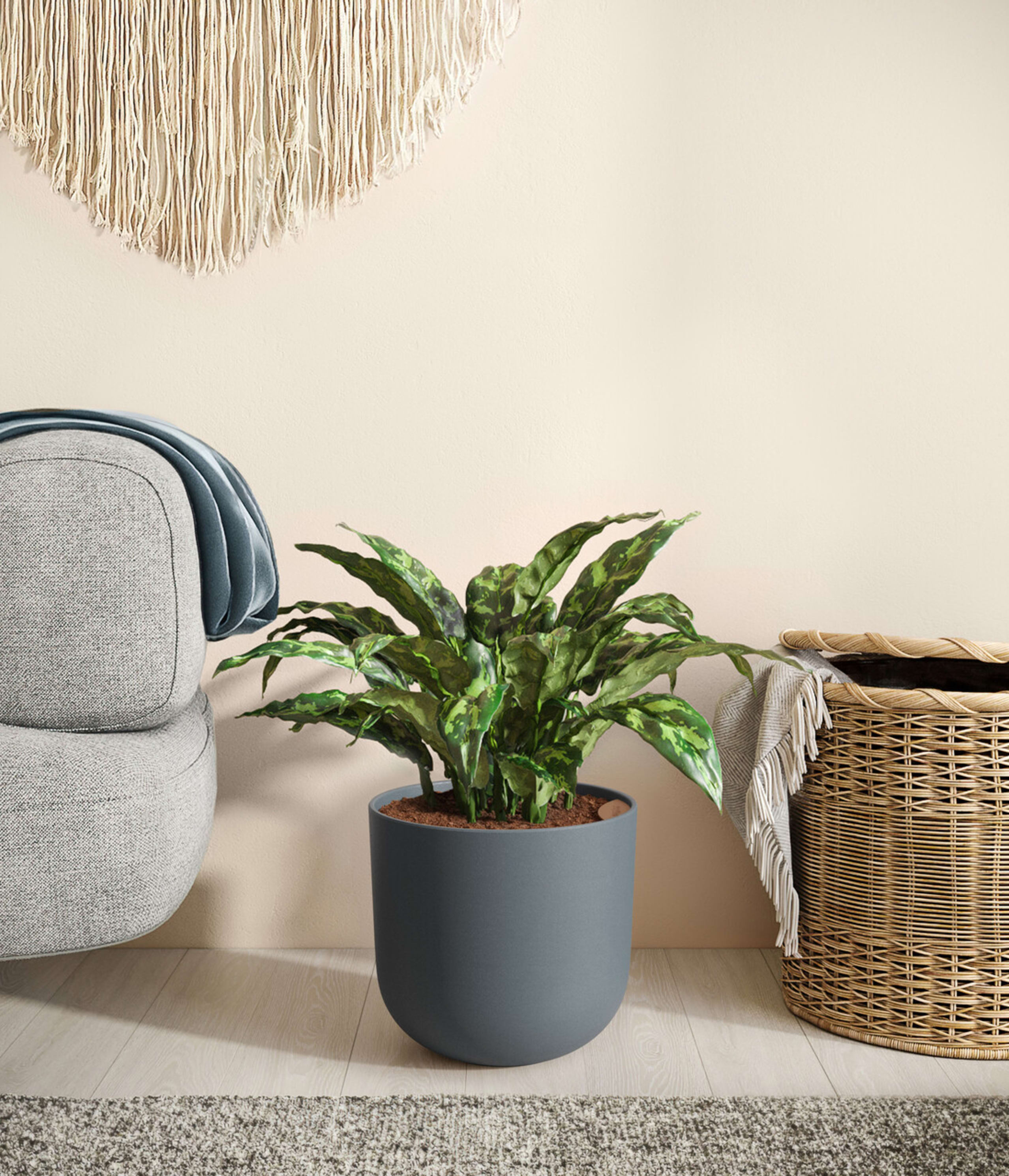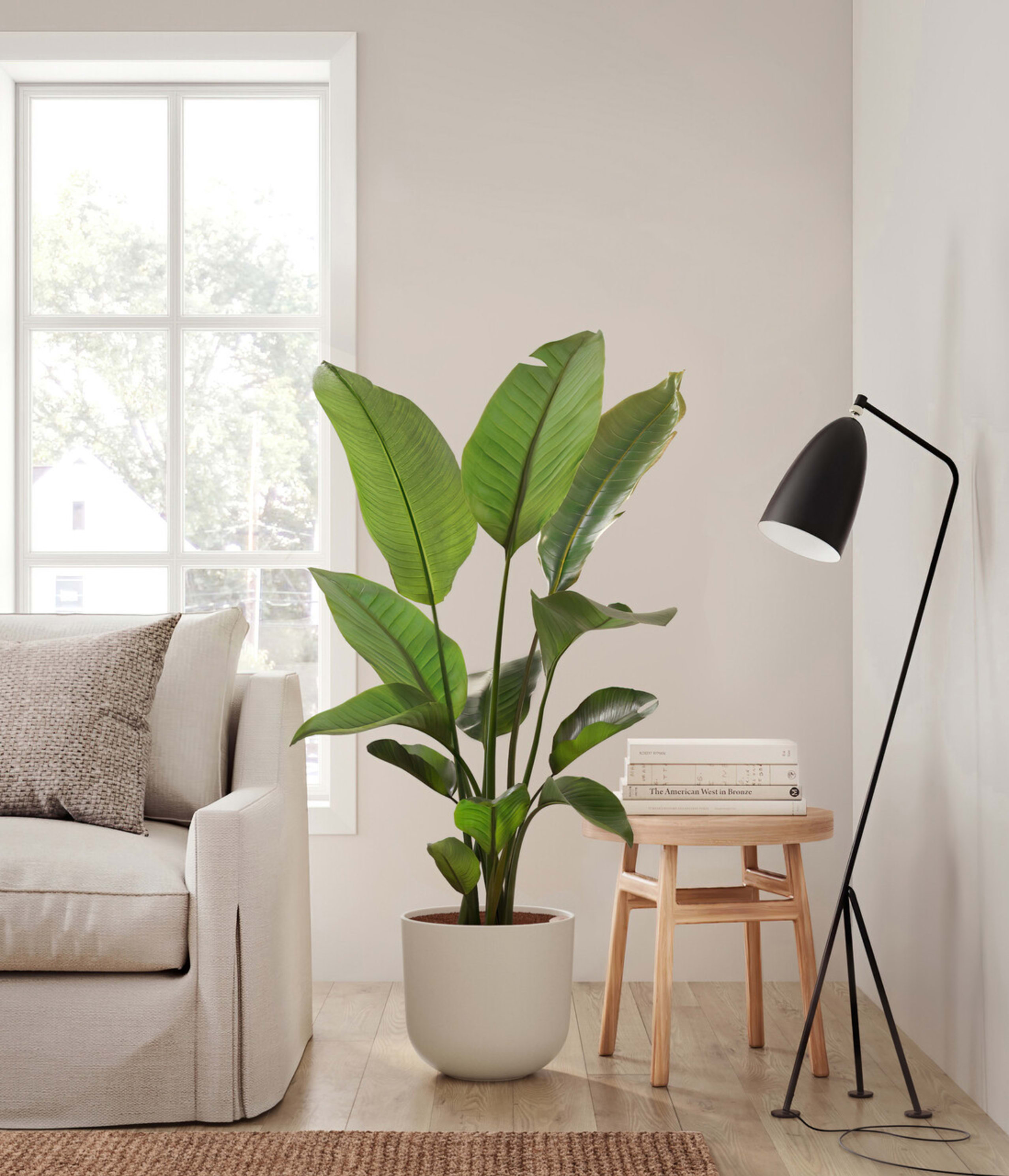About Cat Palm
Collected since the Victorian era, Cat Palm is historically loved, desired, and cherished as a symbol of social status. Naturally so, as this Southern Mexico native stylishly fills the room with bright and bold emerald green leaf clusters attached by golden stems to dense, cascading fronds. Graceful and mighty, Cat Palm purifies the air while creating a tropical vacation feel year-round.
Other common names
- Cascade Palm
- Cataract Palm
- Mexican Hat Palm
- Chamaedorea Cataractarum
How Often Should I Water My Cat Palm?
With easyplant, watering your Cat Palm is simple. Make sure to check the easyplant reservoir once a month and fill it when empty, and you're all set!
If you don't have the convenience of the easyplant to handle your plant watering needs, you'll need to know how to water your Cat Palm so it thrives. This plant requires enough regular watering to keep the soil moist at all times but not soggy. If you overwater a Cat Palm, some fronds might turn brown. On the flip side, if you allow the soil to dry out too much, the fronds might turn yellow. Cat Palms are prone to leaf tip burn, so be sure the water you use to water your plant, whether by hand or with the easyplant system, is filtered, distilled, or rainwater. Stay away from salty water or water with chemicals like chlorine or fluoride.
Cat Palm Light Needs
Cat Palms grow best in a space with bright indirect light, although they can also adapt to medium to low-light spaces. Though they can handle some direct light, they are susceptible to leaves burning, so placing them a few feet away from the window and using a thin curtain to diffuse the light is best. Avoid placing it in spaces without natural light.
Choose a south or east-facing window in your home to get the best light for your Cat Palm. Place 1 to 3 feet from the window in the path of light. Observe how your Cat Palm reacts to the placement. You can always adjust the distance if needed. Want more details on plant lighting? Dive into our extensive lighting guide.
Cat Palm Plant Care
Cat Palms might go through an adjustment period when it first enters your home. You might notice it losing several leaves, or leaves will turn yellow; this is no reason for concern. Simply shake off or cut the leaf, and look forward to new and better-adjusted leaves. To help it grow optimally and evenly, occasionally dust the leaves and rotate the pot by a 1⁄4 turn once a month. You may periodically trim and remove old, drying fronds to maintain their aesthetic shape and height.
How Big Do Cat Palm Plants Grow?
The vibrant, bushy cat palm differs from other indoor palms. It does not have a trunk but thin shoots that grow in close clusters. The feather-like fronds are composed of leaflets that can grow to be one foot long and one inch wide. These fronds are what give the Cat Palm a full appearance.
Cat Palm grows slowly and steadily and can reach up to six feet tall and three feet wide. It will lose one or two leaves from the bottom when it grows several new leaves at a time. Even after the period of adjustment, it will occasionally lose leaves.
Due to their slow-growing nature, it can take Cat Palms up to a decade to reach maturity, even under optimal conditions. Factors that influence the growth and vitality of this plant are proper light, sufficient watering, adequate humidity, and temperatures.
Temperature & Humidity
The ideal temperature for your Cat Palm is between 70˚F and 80˚F (21˚C- 27˚C) and should not drop below 45˚F (7˚C). Though these plants like to be in warmer temperatures, excess dry heat can lead to leaf damage. Be sure not to place these plants too close to AC or heating vents, fireplaces, radiators, etc.
Cat Palms thrive in high humidity. A sign your plant isn't receiving enough humidity is browning leaf tips. The ideal humidity level for this plant is 55% or higher.
To create a humid environment for your plant, try placing a tray of water near the plant or using a humidifier. You can also group it with other plants or place it in a bathroom or kitchen where there is naturally higher humidity.
Are Cat Palm Toxic for Pets & Kids?
Some plants add a pleasing aesthetic to the home and can adapt well to the indoor environment but are unsafe to keep in the house. When considering a houseplant, it's important to know if anything toxic about the plant could harm children or animals if touched or ingested.
Cat Palm is non-toxic and safe for humans and animals alike. However, children and pets are still recommended not to attempt to ingest any part of the plant. Ingesting large quantities of the Cat Palm could cause gastrointestinal issues like diarrhea and vomiting.
Troubleshooting Common Problems with Cat Palm
Part of plant care is observing how your plant is fairing in its environment, so you can make adjustments if needed. Every houseplant will have different signs or tells when they aren't doing well. Here are a few things to look out for with the Cat Palm and what to do to fix the issue.
If the leaves are becoming pale or developing scorched and brown spots, relocate the pot to a less directly lit location. If you notice the tips of leaves are browning, raise the humidity in the space by adding a humidifier or one of the other options listed.
If you notice pests like mealy bugs or spider mites on the plant, use neem oil, warm soapy water, or insecticide soap to rid the plant of the insects. Reddish-brown lesions on the plant's fronds may indicate your Cat Palm is suffering from a fungal disease called Leaf Spot disease. Separate the plant from others, prune heavily infected leaves, and treat others with a fungicide or neem oil until the infection has cleared up.
Frequently Asked Questions about Cat Palm Plant
Is a Cat Palm a good indoor plant?

The Cat Palm is an excellent indoor plant. It's easy to maintain, provided it's given the appropriate care, and it's safe around children and pets. An added bonus is that most palm plants are air purifiers, cleaning the air of harmful pollutants.
Is the Cat Palm an outdoor plant?

Cat Palms can be grown both indoors and outdoors. If a Cat Palm is planted outside, it should be placed in an area with full to partial shade, so the fronds don't get scorched in the direct sunlight. These plants need warmer climates, so they will only do well year-round in zones 9-11.
Are Cat Palms hard to keep alive?

Cat Palm is a low-maintenance plant that is relatively easy to care for and keep alive. Your plant will thrive if you follow proper care instructions and monitor your Cat Palm for any troubleshooting signs, such as brown fronds, yellow leaves, and pests. Be sure to keep it in a space with a humid climate and bright, indirect light, and keep a watering schedule in which the soil almost dries out completely to maintain it happy and healthy.

 Small Plants
Small Plants Medium Plants
Medium Plants Plants Collections
Plants Collections Large Plants
Large Plants Huge Plants
Huge Plants